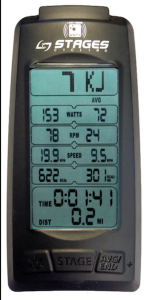Molly P. asked:
“In my Spinning® training, I was taught never to touch someone else’s resistance knob, but I know instructors who do it all the time. I’ve also seen posts in forums where people admit they’ve done it. What do you think? Is it dangerous?”
This is such a great question—and one that’s come up more than once over the years. As a Spinning® Master Instructor, I used to teach a firm “never, ever” approach to this. And for the most part, I still believe that’s the right mindset for new instructors: your primary job is to help riders learn how to adjust their own resistance. But there are rare exceptions when stepping in may help the rider.
Let’s look at a few examples—and one big warning about when not to do it.
1. In Case of Emergency
This one’s a no-brainer. If someone is having a medical emergency and is unable to stop the bike themselves, of course, you should hit the brake. While I’ve thankfully never seen this happen in one of my classes or heard about it from another instructor, it’s the one time when it’s absolutely appropriate to intervene without asking permission.
2. Cadence Is Too High and They’re Flailing
Have you ever had someone riding at an out-of-control cadence—legs spinning wildly, bouncing in the saddle—and no amount of coaching seems to help?
You’ve cued the target cadence. You’ve stood in front of them. You’ve explained that the beat of the music is their guide. You’ve even pointed to the cadence number on the console. But they still don’t seem to register what’s going on.
In these rare cases, if everything else has failed and they’re still pedaling at 110+ rpm, you might want to help them feel what proper resistance should feel like.
But do it with permission.
Say something like:
“Would you be OK if I help you adjust the resistance a bit so you can feel what I mean? Let me know when you start to feel some pressure against your feet, and I’ll keep turning slowly until we’re closer to the target cadence.”
Keep it subtle, talk them through it, and explain why it matters. Make sure your mic is off so it’s a private conversation. Then help them connect the dots between what they feel and what they see on the console.
Once they’ve found the right resistance, encourage them to remember that sensation. Remind them that even an easy flat road requires some resistance and that next time, it’s up to them to find it on their own.
3. Power Meters Confuse Them
The final reason I believe it’s OK to touch a rider’s resistance knob is something I only figured out recently. It may have happened before, but this time, I was able to understand the cause and find a way to fix it.
I teach on Stages bikes with power at two different facilities. At one of them, I lead a 10-week winter training program to prepare participants for outdoor cycling. And while some people assume everyone in these programs is already an experienced cyclist, that’s not always the case. Some are new or still building confidence and skill.
Early in this year’s program, I was explaining how cadence and resistance work together to create power (watts). I had riders hold a steady cadence and then, every two minutes, add just enough resistance to raise their power output by 4–6 watts. But one woman was getting frustrated—no matter what she did, her power kept bouncing all over the place.
I coached her to make smaller adjustments and to keep a constant cadence of 80 rpm, but it didn’t help. Her frustration continued.
So I stood next to her and observed. After a few attempts, I finally figured it out. Every time she reached for the resistance knob, she unconsciously slowed her cadence by 5–10 rpm. She didn’t realize she was doing it. So when she was trying to hit a specific wattage, she’d do so at a slower cadence. Then she’d look up, see that her rpm had dropped, and try to bring it back up—only to see her power spike by 20 or 25 watts. That led her to turn the resistance down again, and with it, her cadence slowed… and the cycle repeated itself.
It wasn’t just about body awareness; she was also overwhelmed by all the numbers she was seeing. Take a look at the console on a Stages bike:

There’s a lot going on. She was trying to pay attention to multiple numbers at once, which made it difficult to stay focused on one task.
To help her, I stood beside her and pointed to the second row on the console. I said, “This is your cadence. Ignore the right column—just focus on this number on the left. Bring it to 80 and keep it there. I’ll adjust your resistance for now to help you feel what a wattage of 120 feels like at that cadence.”
As I slowly turned the knob, I explained, “See how little I’m turning it? You need to be subtle—give it time to settle. Notice how the watts respond when your cadence stays steady.”
Once we got her stable at 80 rpm and 120 watts, I let her try again. I asked her to practice reaching for the knob while keeping her cadence unchanged. It took a few tries, but she began to get the hang of it. She finally understood the reason for her earlier frustration.
In this case, me turning the knob for her wasn’t about control—it was about clarity. It helped her make the connection between cadence, resistance, and power. She’s not perfect at it yet, but six weeks later, she’s getting better every class.
And this isn’t as rare as you might think. A few weeks later, at another club, I saw the same thing happen with a different rider. This time, I caught it right away and was able to help her become more aware of her cadence changes while adjusting resistance.
When Not to Touch Someone’s Resistance
Any other time.
Unless it’s one of the examples above, there’s no reason you should be adjusting someone’s resistance for them. And please, never do it as a joke or power move.
I’ve heard of instructors walking around the room and randomly turning up someone’s resistance with a “let’s make this harder for you!” attitude. That’s not funny. It’s not motivational. It’s just bad coaching.
You never know what someone is dealing with. Maybe they’re nursing an injury. Maybe they’re recovering from an illness. Maybe they’re doing exactly what their body needs on that day. Your job is to guide, not control.
Teach your riders how to find the right amount of resistance for the goal of the segment—whether that’s based on power, heart rate, or perceived effort. Then let them own their ride.
Final Thoughts
In most cases, your hands should stay off the bike unless you’re on it. But in those rare moments when a rider truly needs help understanding what resistance should feel like—and you’ve exhausted all verbal cues—stepping in briefly (with consent) can make a big difference.
Just remember: one adjustment to teach, not to control.
[/show_if]


I always touch a rider’s resistance when I am first setting them up. This may not be in the spirit in which you posed your question but…when I set up a new rider I of course show them bike settings, then body position and relaxation, I explain a bit about the computer, and I tell them to take the first five classes very easy. I cue them (standing next to them) about the three riding positions. In position 1 I turn their tension full OFF, then gradually increase to “an easy flat road”. I show them the WATT reading for that, then I increase, while having them maintain cadence, to a heavy climb and have them note the WATT reading. I may have them ride at a heavy setting for 2-3 seconds, then I turn it back to flat road. Then i repeat that they should take it easy for the first five classes. I of course then have them move into position 2 and 3 and cue them to increase the setting to support their weight. After the first day I never touch a rider’s tension setting…
I used to believe that; I taught that. But then I encountered the two situations discussed above (fortunately I’ve never encountered an emergency). I discovered that I helped the riders immensely rather than hindered them.
I’ll reiterate. It’s only after ALL other coaching has failed, there is something the rider is missing in their understanding. Also, it’s small amounts, doled out carefully. In the power example, I was working with 3, 4, maybe 5 watts at the most. And it’s not about wattage over threshold, so it wasn’t heavy. There was zero liability.
In the case of someone with an emergency, I would even suggest you may be liable if you didn’t do everything at your disposal to help them, including hitting the brakes.
Absolutely I agree, those instructors who come around the room and crank up riders’ resistance for them, especially when climbing (i.e. lots of load) are putting their riders at risk. It’s a terrible thing to do. They have liability.
Never Ever touch the resistance level. In case something negative happens u may become legally liable. Its not worth it no matter how much u want to help.
please see my response above. There was no risk, only benefit.
Great article , one I am very passionate about.
I still believe DO NOT touch someones resistance. You may not know there issues, back, knee, etc. I do believe coaching (if that means standing next to them). Ultimately they must learn themselves the correct way to ride by our coaching. Some just take longer than others to understand. Thanks for the article.